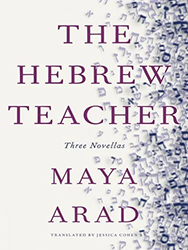Bubbe and Me in the Kitchen: A Kosher Cookbook of Beloved Recipes and Modern Twists is an inspired story of Jewish grandmothers and the cooking legacy they have left for future generations. “My grandmother’s recipes, and the new ones they’ve inspired,” Miri Rotkovitz writes, “are a thread between past and future, and a part of the tapestry we continue to weave as a family.”
Index cards, or scraps of paper that bear a family recipe are an important link in the history of families, and needless to say, when served, carry with them the nostalgia of days gone by. Writing a family cookbook often depends on various members of that family as they add their memories, notes and suggestions. “If, like my savta,” Rotkovitz advises, “you find a few recipes you enjoy enough to make your own, scribbling adjustments in the margins as she did, so much the better.” This cookbook will not only have your notes but perhaps some ingredient stains on its pages!
Miri Rotkovitz is a food writer, editor, recipe developer, and registered dietician. As the kosher food expert for About.com, she shares recipes, entertaining tips, and articles exploring kosher culture online at Kosherfood.about.com. Bubbe and Me in the Kitchen opens with rules for cooking in adherence to kashrut and a discussion of a healthy kosher diet. Rotkovitz helpfully lists suggestions for what should be kept in the pantry, including staples and substitutions for Passover, and all the necessary accoutrements.
The chapters are familiarly divided by main ingredient: grains, poultry, meat, etc., and “Meatless Meals” — heartwarming winter dish in that vein would be the White Bean Cassoulet, redolent with the scents of comfort food. To note the family connections, the titles of the recipes evoke their inspiration: Ema’s Cold Rice Salad (though the author admits in her mother’s day, they might have opted for Minute Rice and bottled Italian dressing, Roskovitz skips the shortcuts for a tastier, healthier dish); Savta’s Semi-Famous Jewish Apple Cake comes with a humorous story of a kosher bakery in Los Angeles that baked the apple cake but now comes with “input from the author,” whose family matriarch is known for Nana Elsie’s Czechoslovakian Cookies — which hold a special place in the family repertoire of cookies.
Bubbe and Me in the Kitchen also includes Yom Tov (Jewish holiday) menus, including dinners for a Lag B’Omer cookout and a romantic Tu B’Av menu. Passover is one of the author’s favorite holidays: “Perhaps it’s the one I associate most closely with my grandmother,” Rotkovitz explains. “She’d extend the table from dining room to living room, hosting convivial Seders with as many guests as the apartment would allow…” In addition to charts, substitutions, and other resources for Passover cooking, Rotkovitz shares a refreshing approach to the holiday and its culinary limitations: “I fix my eye on what we can eat, instead of trying to duplicate what’s off limits for the week and find I enjoy the fresh perspective.”
Additionally, Rotkovitz is conscious of the various contaminants one might find in the foods they purchase and prepare. On a page entitled “The Clean Fifteen and the Dirty Dozen,” the author points readers to the Environmental Working Group, which looks at data supplied by the United States Department of Agriculture and the Food and Drug Administration on pesticide residues and compiles an annual ranking of commercial crops in terms of their pesticide loads. Rotkovitz urges cooks to check the most recent list and additional guides — excellent advice and information not often found in cookbooks.
One of the nicer touches in Bubbe and Me in the Kitchen is how other cooks are also invited to share their recipes in Bubbe and Me in the Kitchen, as well. Paula Shoyer, for example, contributes a dessert recipe together with a memory of her grandmother’s reaction to Shoyer’s decision to study at a pastry school in Paris: “Who goes to school to learn how to bake a cake? You just bake a cake.”
Related Content:
- Amy Gottlieb: The Women at the Kitchen Table
- Elana Benjamin: Four Generations of Lunch, from India to Australia
- Essays on Food, Eating, and Recipes



